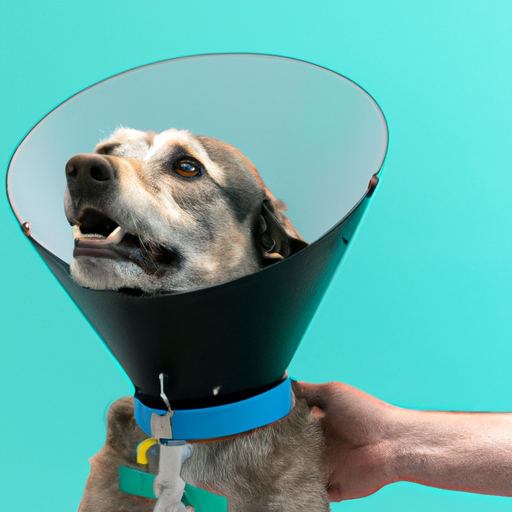When your dog undergoes surgery, part of the recovery process may involve the use of an E-collar, or Elizabethan collar, named after the ruffled collars popular during the Elizabethan era. This device, which might seem like an inconvenience to your furry friend, plays a crucial role in their healing.
- What is an E-Collar?
- Purpose of an E-Collar
- Selecting the Right E-Collar
- Introducing Your Dog to the E-Collar
- Managing Your Dog’s Activities with an E-Collar
- Frequently Asked Questions
What is an E-Collar?
An E-collar is a protective device worn around a dog’s neck to prevent them from reaching surgical wounds or other areas of irritation on their body. It resembles a cone or lampshade and is often made of plastic, fabric, or inflatable material. The American Kennel Club provides further details on the various types of E-collars available.
Purpose of an E-Collar
The primary purpose of an E-collar is to prevent dogs from licking, biting, or scratching their wounds or stitches, which could lead to infections or other complications. Although it might seem uncomfortable, it is a necessary tool for your dog’s recovery.
| Pros | Cons |
|---|---|
| Prevents dogs from licking or scratching wounds | Can be uncomfortable or frightening for the dog |
| Protects stitches from being disturbed | Might restrict a dog’s movement |
| Helps speed up healing process | The dog may bump into things due to restricted peripheral vision |
Selecting the Right E-Collar
Choosing the right E-collar depends on several factors. The size and breed of your dog, the location of their wound, and their level of activity are all considerations. It’s essential to ensure the collar fits correctly – it should be snug but not too tight. Onetopdog has a helpful guide on dog collar sizes that might assist you.
Introducing Your Dog to the E-Collar
Introducing an E-collar to your dog may take some time and patience. Start by allowing them to sniff and explore the collar. Reward them with treats and praise when they show curiosity about the collar. Gradually introduce the collar by placing it around their neck for short periods, increasing the time as they get accustomed to it. For more tips on helping your dog adjust to wearing an E-collar, check out this helpful article from Onetopdog.
Managing Your Dog’s Activities with an E-Collar
With an E-collar, your dog’s activities will be restricted. They may have difficulty eating, drinking, or navigating their environment. Here are some suggestions to make their life easier:
- Elevate their food and water bowls: This can make it easier for your dog to eat and drink with the collar on.
- Clear their path: Remove any objects that might obstruct their movement.
- Give them time: Allow your dog time to adjust to their new accessory.
For more insights on managing your dog’s activities while they’re in recovery, Onetopdog provides comprehensive information.
Frequently Asked Questions
- Can my dog eat and drink with an E-collar on? Yes, but you may need to elevate their bowls to make it easier for them.
- How long does my dog need to wear the E-collar? This depends on the type of surgery and the healing process. Always follow your vet’s advice.
- Is there an alternative to the E-collar? Yes, there are alternatives like inflatable collars or recovery suits. Consult with your vet to determine the best option for your dog.
In conclusion, an E-collar might initially seem uncomfortable for your dog, but it’s a necessary tool to ensure their quick and safe recovery after surgery. Remember to be patient and supportive as your furry friend adjusts to this temporary change.



